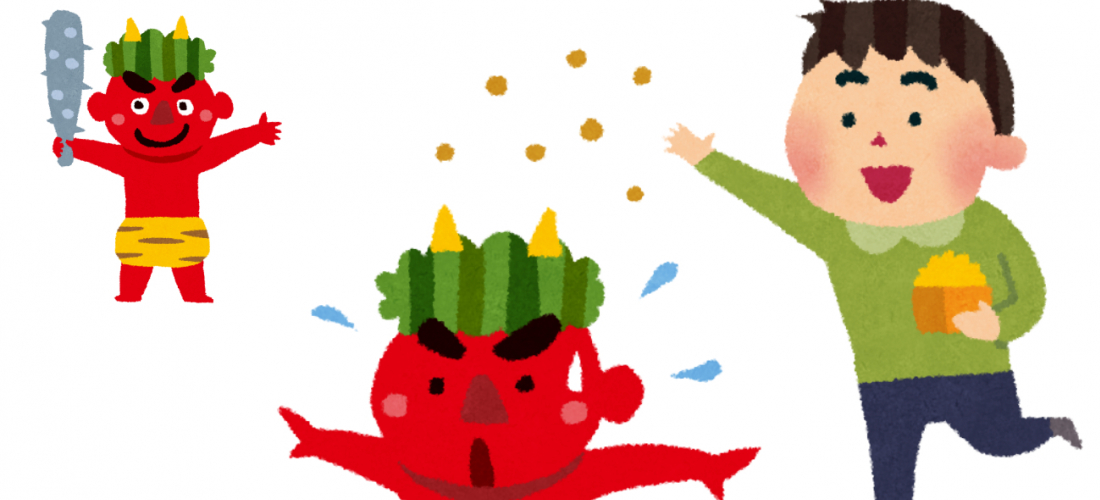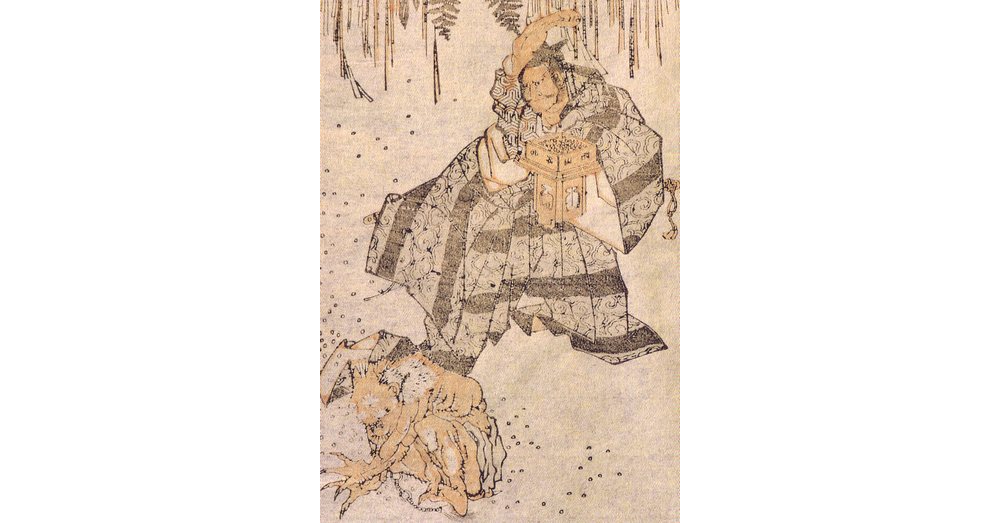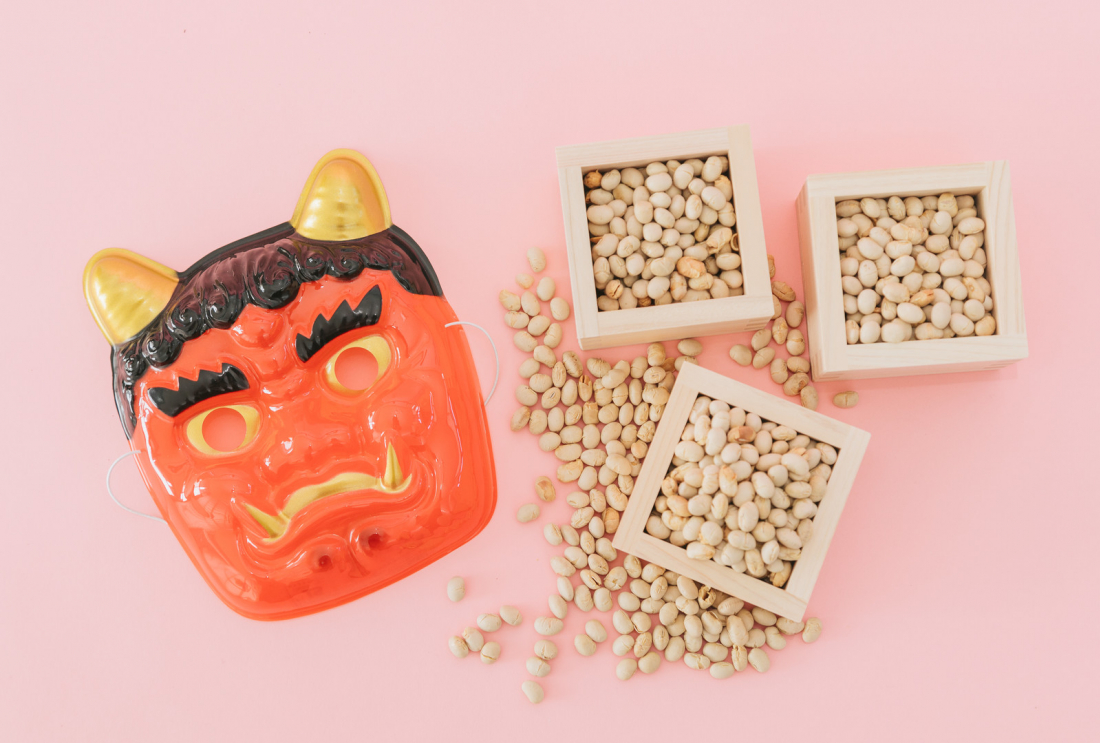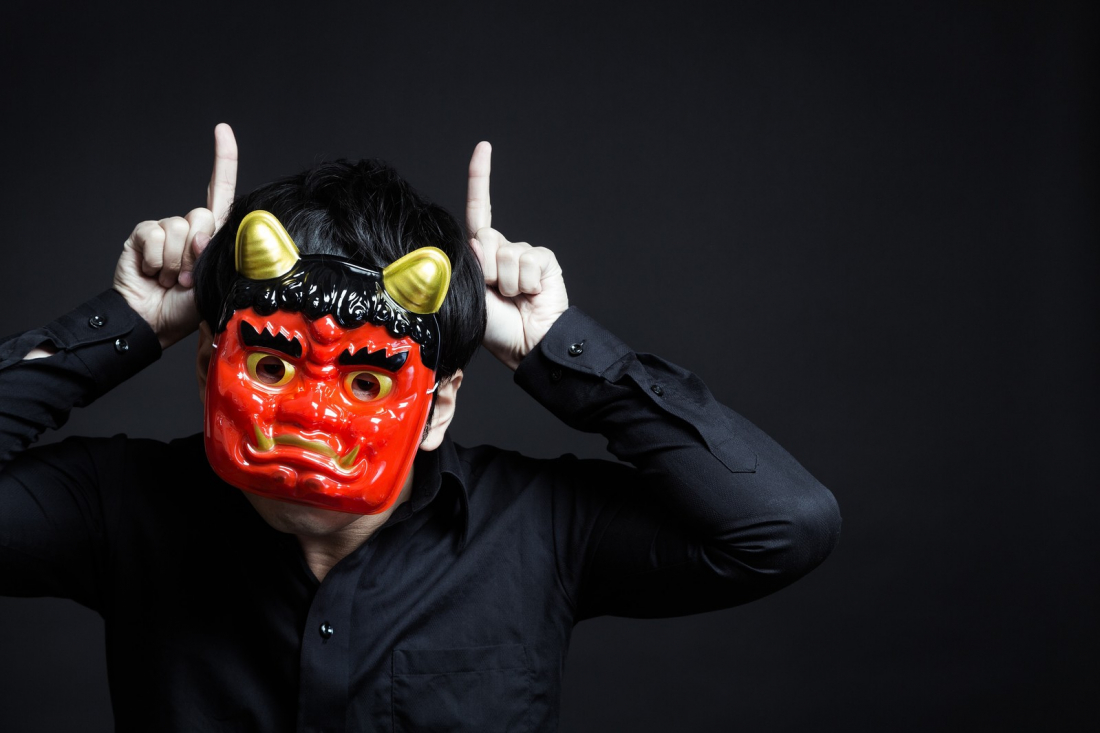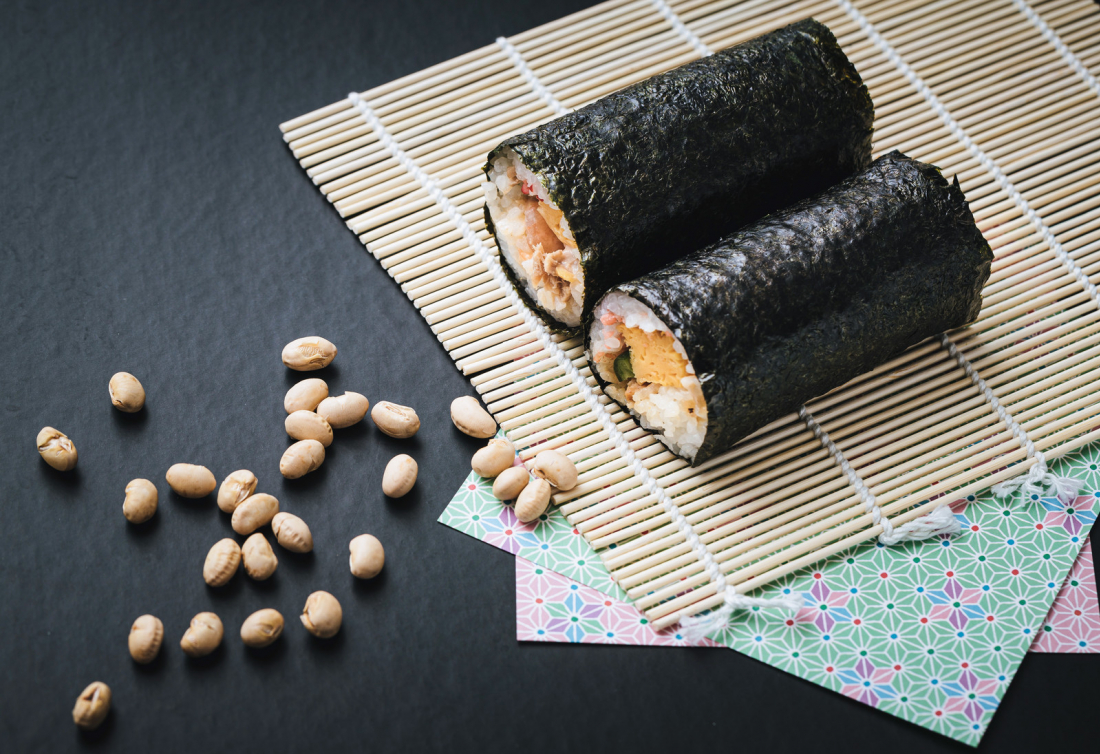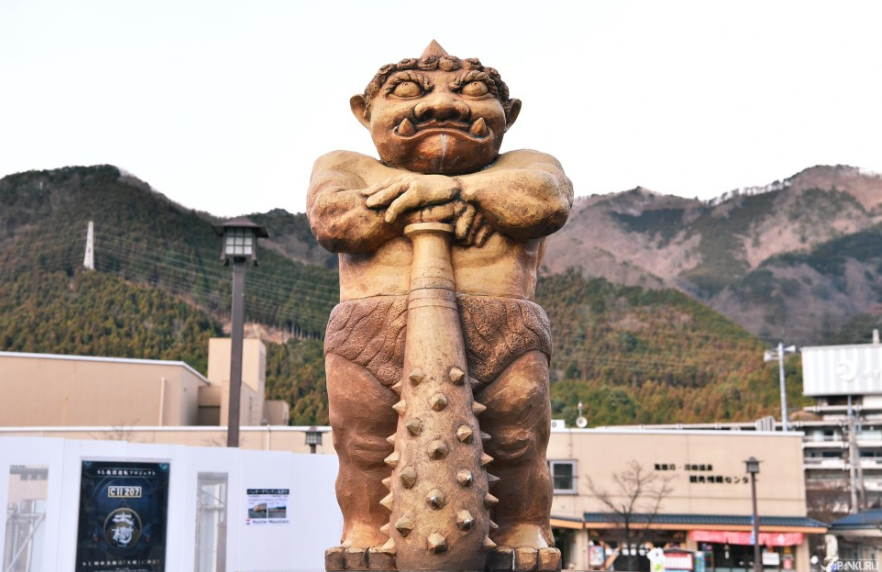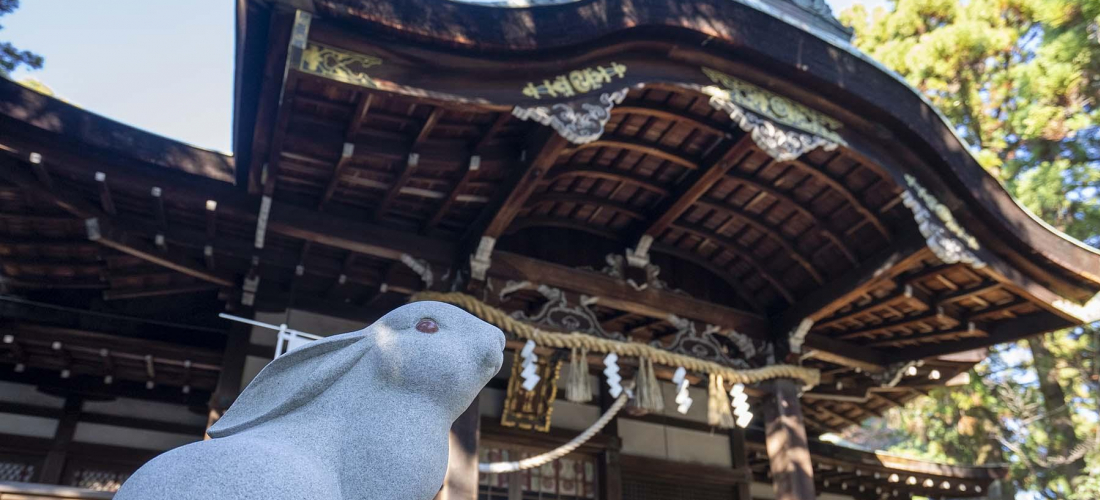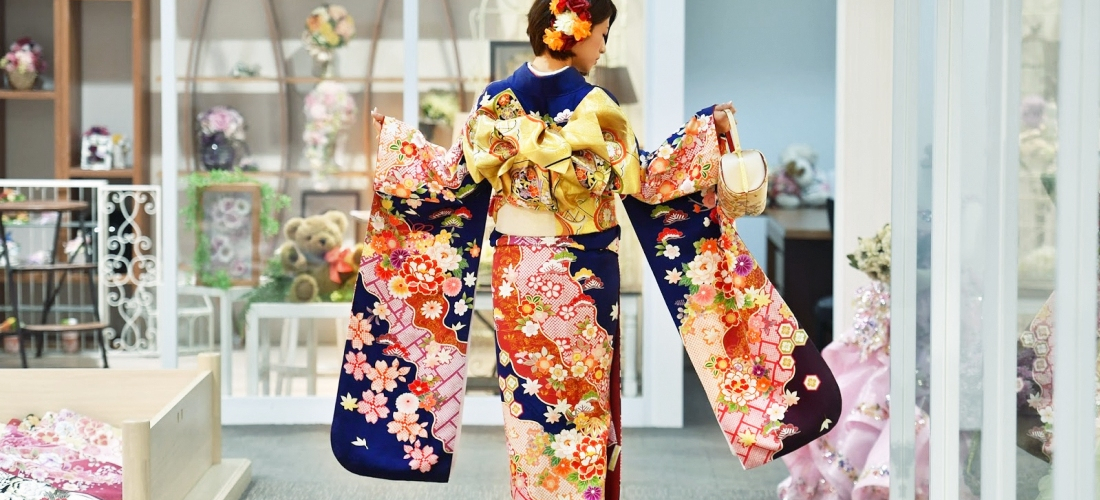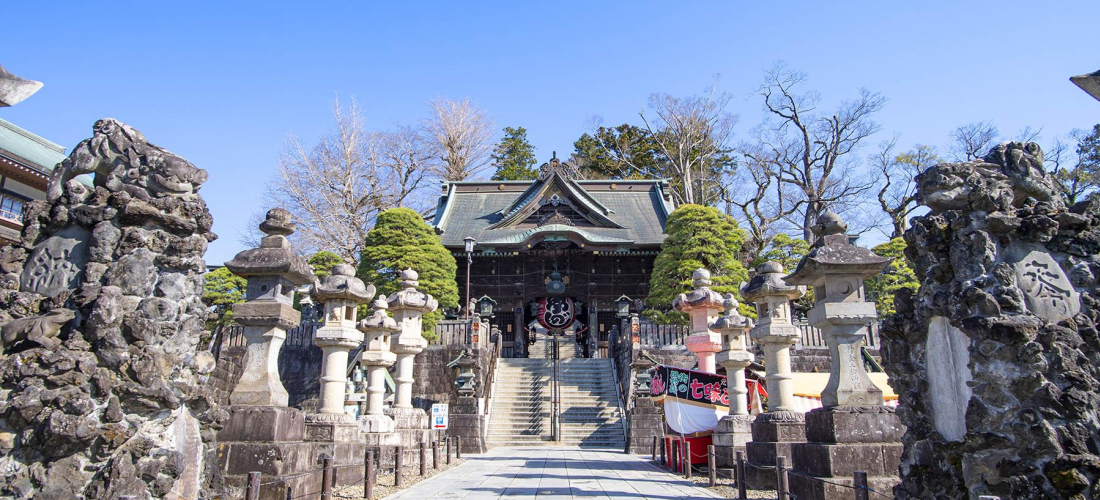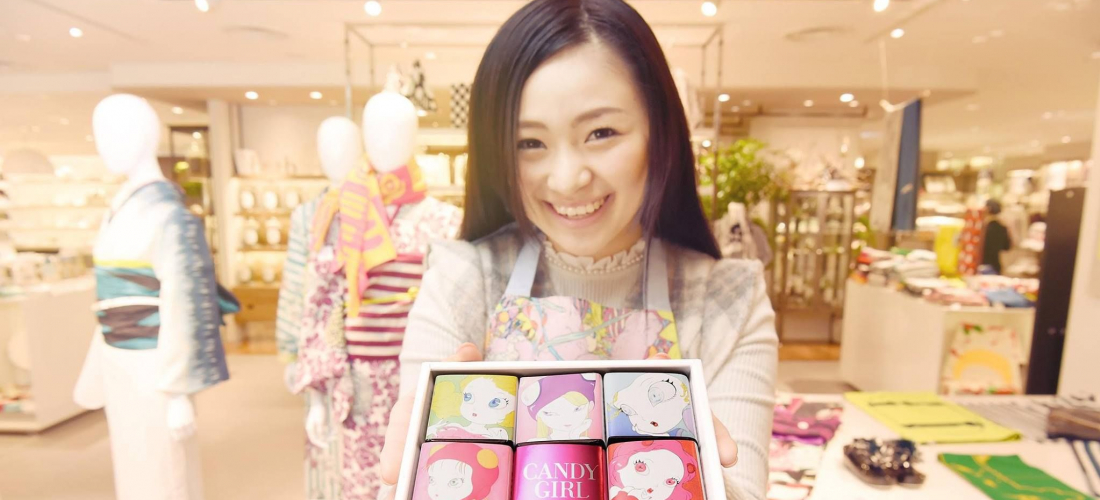CONTENTS
Demons out, good luck in, it’s time to celebrate this light-hearted Japanese holiday!
What Is Setsubun All About?
The Japanese holiday Setsubun (節分) traces its history back to lunar new year celebrations in China, and when the tradition arrived in Japan in the 8th century, people celebrated on the final day of the traditional winter season (these days Setsubun is generally on February 3rd). Since the lunar new year starts with preparing for springtime, Setsubun is part of the "spring festival," and it's all about driving away last year's demons to start the season right, ritually getting rid of any bad luck or evil spirits that might be hanging around, and preparing for a new year filled with new good luck.
And just how does one drive away the demons clinging to you from the previous year? Well, you throw beans of course! The main surviving tradition of this ancient holiday is called "mamemaki" (豆まき), where roast soybeans are thrown at the demons to drive them off. The practice has even made it into the works of famed ukiyo-e artist Katsushika Hokusai. The beans must be roasted before they're used to chase away demons, though! If uncooked soybeans were thrown and one happened to take root, there's a chance that last year's evils could take root with it, and stick around!
How to Celebrate Setsubun at Home
Although Setsubun has had more than 1,000 years to build up traditions, celebrations these days are actually quite simple! All you really need to enjoy Setsubun from the comfort of your own home is an oni mask, made to look like the demon ogres of Japanese myth and legend, and some roast soybeans.
Things really get started when someone dons the oni mask, and takes on the role of the last year's evils. Traditionally the head of the household played the part of the demon, but nowadays things are less rigid, and it's actually common for those in a traditional "unlucky year" to be the oni! The rest of the people gathered will take their roast soybeans and throw them at the "oni," shouting "Oni wa soto! Fuku wa uchi!" (鬼は外! 福は内!) The phrase literally means "Demons out! Fortune in!" The oni is driven out of the house with the power of roast soybeans, before having the door slammed in their face!
Some households choose to skip the oni mask and just throw their soybeans out the front door to keep general bad luck at bay, although if you choose to do this while living in an apartment, it might mean some extra time cleaning beans off the floor of shared hallways.
The soybeans aren't only used for banishing demons, though. One last Setsubun tradition has you eat a certain number of the beans each year – as many soybeans as years you've been alive, plus one extra! While some people choose to leave the last bean off and just stick with their age, adding one extra is said to promise good luck in the coming year, as well.
A more recent addition to the Setsubun dinner table is ehomaki (恵方巻), a long, unsliced sushi roll stuffed with a variety of fillings, and one mysterious origin story. When did people first start eating ehomaki? Unclear. Where? Well, most stories say that the tradition began in Osaka. Ehomaki only started to make its way to Tokyo, and the rest of Japan, in the 1990s and early 2000s, introducing people to a brand new Setsubun tradition that has quickly become standard in many households.
Ehomaki literally means "lucky direction roll," and the tradition is to take the over-stuffed sushi roll and silently eat the whole thing at once while facing a certain "lucky direction." Each year that lucky direction changes, facing the location of a "fortune-bringing god," but ehomaki legends tell us that the purpose of all these strict rules is to help the good luck flow smoothly from the god, through the sushi, and right into you! Changing direction, stopping halfway, or uttering a word would block the flow of fortune, so you have to resist until you've finished the whole thing!
Celebrating Setsubun Out and About
If you're ready to leave the house for a Setsubun outing, some shrines and temples are known to hold events for the holiday, carrying on centuries-old traditions and starting some new ones in more recent years. Many shrines in particular become the stage for traditional Shinto purification rituals, sometimes featuring performances complete with colorful demon costumes, like at Kyoto's Heian Shrine. Not far away, at Yasaka Shrine, celebrations include traditional dances from Kyoto's local maiko, who toss little packets of beans to the audience before their departure! Throwing beans to the crowd is actually part of many large-scale Setsubun festivals, whether it's maiko doing the throwing, or anyone from priests to sumo wrestlers, with some larger shrines even getting big celebrities to make an appearance and toss some soybeans to the crowd. If you're looking for a low-key Setsubun event, keep an eye out for small, local shrines and temples, but for something on a larger scale, some of Japan's most popular Setsubun celebrations can be found at Yoshida Shrine in Kyoto, Sensoji Temple in Tokyo, Naritasan Shinshoji Temple in Chiba, and Chusonji Temple in Iwate!
Whether you'll be shouting "oni wa soto, fuku wa uchi!" at home with the family this year, or heading out to see ancient rituals, traditional performances, and the celebrities of Japan throwing lucky beans to their fans, Setsubun is a great chance for us all to banish our demons from the last twelve months, and start afresh with the promise of plenty of good soybean fortune!
For more info and updates from Japan, check Japankuru for new articles, and don't forget to follow us on Twitter, Instagram, and Facebook!
Details
NAME:Setsubun (節分)
COMMENT
FEATURED MEDIA
VIEW MORE 
A New Tokyo Animal Destination: Relax & Learn About the World’s Animals in Japan
#pr #japankuru #anitouch #anitouchtokyodome #capybara #capybaracafe #animalcafe #tokyotrip #japantrip #카피바라 #애니터치 #아이와가볼만한곳 #도쿄여행 #가족여행 #東京旅遊 #東京親子景點 #日本動物互動體驗 #水豚泡澡 #東京巨蛋城 #เที่ยวญี่ปุ่น2025 #ที่เที่ยวครอบครัว #สวนสัตว์ในร่ม #TokyoDomeCity #anitouchtokyodome

Shohei Ohtani Collab Developed Products & Other Japanese Drugstore Recommendations From Kowa
#pr #japankuru
#kowa #syncronkowa #japanshopping #preworkout #postworkout #tokyoshopping #japantrip #일본쇼핑 #일본이온음료 #오타니 #오타니쇼헤이 #코와 #興和 #日本必買 #日本旅遊 #運動補充能量 #運動飲品 #ช้อปปิ้งญี่ปุ่น #เครื่องดื่มออกกำลังกาย #นักกีฬา #ผลิตภัณฑ์ญี่ปุ่น #อาหารเสริมญี่ปุ่น

도쿄 근교 당일치기 여행 추천! 작은 에도라 불리는 ‘가와고에’
세이부 ‘가와고에 패스(디지털)’ 하나면 편리하게 이동 + 가성비까지 완벽하게! 필름카메라 감성 가득한 레트로 거리 길거리 먹방부터 귀여움 끝판왕 핫플&포토 스폿까지 총집합!
Looking for day trips from Tokyo? Try Kawagoe, AKA Little Edo!
Use the SEIBU KAWAGOE PASS (Digital) for easy, affordable transportation!
Check out the historic streets of Kawagoe for some great street food and plenty of picturesque retro photo ops.
#pr #japankuru #도쿄근교여행 #가와고에 #가와고에패스 #세이부패스 #기모노체험 #가와고에여행 #도쿄여행코스 #도쿄근교당일치기 #세이부가와고에패스
#tokyotrip #kawagoe #tokyodaytrip #seibukawagoepass #kimono #japantrip

Hirakata Park, Osaka: Enjoy the Classic Japanese Theme Park Experience!
#pr #japankuru #hirakatapark #amusementpark #japantrip #osakatrip #familytrip #rollercoaster #retrôvibes #枚方公園 #大阪旅遊 #關西私房景點 #日本親子旅行 #日本遊樂園 #木造雲霄飛車 #히라카타파크 #สวนสนุกฮิราคาตะพาร์ค

🍵Love Matcha? Upgrade Your Matcha Experience With Tsujiri!
・160년 전통 일본 말차 브랜드 츠지리에서 말차 덕후들이 픽한 인기템만 골라봤어요
・抹茶控的天堂!甜點、餅乾、飲品一次滿足,連伴手禮都幫你列好清單了
・ส่องมัทฉะสุดฮิต พร้อมพาเที่ยวร้านดังในอุจิ เกียวโต
#pr #japankuru #matcha #matchalover #uji #kyoto #japantrip #ujimatcha #matchalatte #matchasweets #tsujiri #말차 #말차덕후 #츠지리 #교토여행 #말차라떼 #辻利抹茶 #抹茶控 #日本抹茶 #宇治 #宇治抹茶 #日本伴手禮 #抹茶拿鐵 #抹茶甜點 #มัทฉะ #ของฝากญี่ปุ่น #ชาเขียวญี่ปุ่น #ซึจิริ #เกียวโต

・What Is Nenaito? And How Does This Sleep Care Supplement Work?
・你的睡眠保健品——認識「睡眠茶氨酸錠」
・수면 케어 서플리먼트 ‘네나이토’란?
・ผลิตภัณฑ์เสริมอาหารดูแลการนอน “Nenaito(ネナイト)” คืออะไร?
#pr #japankuru #sleepcare #japanshopping #nenaito #sleepsupplement #asahi #睡眠茶氨酸錠 #睡眠保健 #朝日 #l茶胺酸 #日本藥妝 #日本必買 #일본쇼핑 #수면 #건강하자 #네나이토 #일본영양제 #อาหารเสริมญี่ปุ่น #ช้อปปิ้งญี่ปุ่น #ร้านขายยาญี่ปุ่น #ดูแลตัวเองก่อนนอน #อาซาฮิ

Japanese Drugstore Must-Buys! Essential Items from Hisamitsu® Pharmaceutical
#PR #japankuru #hisamitsu #salonpas #feitas #hisamitsupharmaceutical #japanshopping #tokyoshopping #traveltips #japanhaul #japantrip #japantravel

Whether you grew up with Dragon Ball or you just fell in love with Dragon Ball DAIMA, you'll like the newest JINS collab. Shop this limited-edition Dragon Ball accessory collection to find some of the best Dragon Ball merchandise in Japan!
>> Find out more at Japankuru.com! (link in bio)
#japankuru #dragonball #dragonballdaima #animecollab #japanshopping #jins #japaneseglasses #japantravel #animemerch #pr

This month, Japankuru teamed up with @official_korekoko to invite three influencers (originally from Thailand, China, and Taiwan) on a trip to Yokohama. Check out the article (in Chinese) on Japankuru.com for all of their travel tips and photography hints - and look forward to more cool collaborations coming soon!
【橫濱夜散策 x 教你怎麼拍出網美照 📸✨】
每次來日本玩,是不是都會先找旅日網紅的推薦清單?
這次,我們邀請擁有日本豐富旅遊經驗的🇹🇭泰國、🇨🇳中國、🇹🇼台灣網紅,帶你走進夜晚的橫濱!從玩樂路線到拍照技巧,教你怎麼拍出最美的夜景照。那些熟悉的景點,換個視角說不定會有新發現~快跟他們一起出發吧!
#japankuru #橫濱紅磚倉庫 #汽車道 #中華街 #yokohama #japankuru #橫濱紅磚倉庫 #汽車道 #中華街 #yokohama #yokohamaredbrickwarehouse #yokohamachinatown

If you’re a fan of Vivienne Westwood's Japanese designs, and you’re looking forward to shopping in Harajuku this summer, we’ve got important news for you. Vivienne Westwood RED LABEL Laforet Harajuku is now closed for renovations - but the grand reopening is scheduled for July!
>> Find out more at Japankuru.com! (link in bio)
#japankuru #viviennewestwood #harajuku #omotesando #viviennewestwoodredlabel #viviennewestwoodjapan #비비안웨스트우드 #오모테산도 #하라주쿠 #日本購物 #薇薇安魏斯伍德 #日本時尚 #原宿 #表參道 #japantrip #japanshopping #pr

Ready to see TeamLab in Kyoto!? At TeamLab Biovortex Kyoto, the collective is taking their acclaimed immersive art and bringing it to Japan's ancient capital. We can't wait to see it for ourselves this autumn!
>> Find out more at Japankuru.com! (link in bio)
#japankuru #teamlab #teamlabbiovortex #kyoto #kyototrip #japantravel #artnews
Photos courtesy of teamLab, Exhibition view of teamLab Biovortex Kyoto, 2025, Kyoto ® teamLab, courtesy Pace Gallery

Japanese Makeup Shopping • A Trip to Kamakura & Enoshima With Canmake’s Cool-Toned Summer Makeup
#pr #canmake #enoshima #enoden #에노시마 #캔메이크 #japanesemakeup #japanesecosmetics

⚔️The Robot Restaurant is gone, but the Samurai Restaurant is here to take its place. Check it out, and don't forget your coupon!
🍣신주쿠의 명소 로봇 레스토랑이 사무라이 레스토랑으로 부활! 절찬 쿠폰 발급중
💃18歲以上才能入場的歌舞秀,和你想的不一樣!拿好優惠券去看看~
#tokyo #shinjuku #samurairestaurant #robotrestaurant #tokyotrip #도쿄여행 #신주쿠 #사무라이레스토랑 #이색체험 #할인이벤트 #歌舞伎町 #東京景點 #武士餐廳 #日本表演 #日本文化體驗 #japankuru #japantrip #japantravel #japanlovers #japan_of_insta

Japanese appliance & electronics shopping with our KOJIMA x BicCamera coupon!
用JAPANKURU的KOJIMA x BicCamera優惠券買這些正好❤️
코지마 x 빅 카메라 쿠폰으로 일본 가전 제품 쇼핑하기
#pr #japankuru #japanshopping #kojima #biccamera #japaneseskincare #yaman #dji #osmopocket3 #skincaredevice #日本購物 #美容儀 #相機 #雅萌 #日本家電 #일본여행 #면세 #여행꿀팁 #일본쇼핑리스트 #쿠폰 #일본쇼핑 #일본브랜드 #할인 #코지마 #빅카메라 #japankurucoupon

